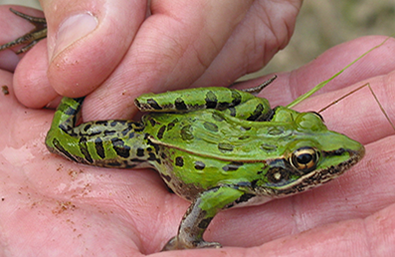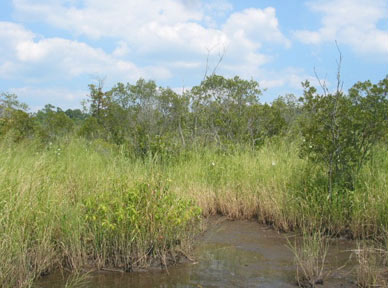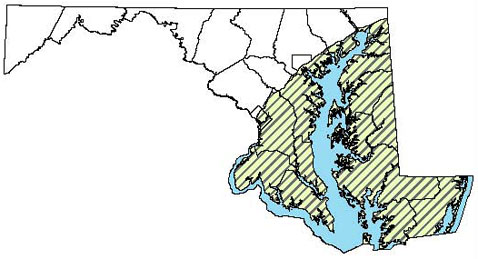Field Guide to Maryland's Frogs and Toads (Order Anura)
Main_Content
Southern Leopard Frog (Lithobates sphenocephalus) | 
Southern Leopard Frog, photo courtesy of Scott A. Smith
| | Former Name: |
Size:
|
Appearance: |
Habitats:

Photo of Little Mill Creek, habitat for Southern Leopard Frog
|
How to Find: |
Distribution in Maryland:Southern Leopard frogs are common in the coastal plain of Maryland.  | | For More Information: |
|
